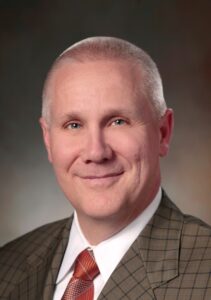How did the American Welding Society (AWS) come to be, and what were its earliest goals?
The Emergency Fleet Corporation was established by the United States Shipping Board in 1917 to maintain vessels in the Merchant Marine during WWI, and to also find ways to build them lighter and more efficiently. Comfort A. Adams, a professor of electrical engineering at Harvard, was named chairman of the Welding Committee of the Emergency Fleet Corporation. He came away convinced that the same collaborative model would benefit American welding. So that led to the AWS being established in 1919. The primary focus at that time involved writing codes and standards in order to begin building a structure for the U.S. welding industry. To use a sports analogy, you can’t have a football game if the teams are playing by two sets of rules. We needed to level the playing field for companies involved in welding in the U.S. in a way that showed no bias to anyone and united everyone under the same set of codes and standards. To achieve this we brought on a variety of welding professionals to write codes pertaining to processes rather than the equipment, so that no single OEM had an advantage. That remains our guiding principle in developing codes and standards to this day. The goal was to have a common set of standards for welders building ships, bridges, railways, etc., to ensure safety, quality, and efficiency. It was also meant to regulate ourselves before someone else did. All of our work is meant to help, not hinder.

What milestones can you point to as the AWS grew and evolved?
Our first official standard was published in 1927, which resulted from a great deal of cooperation and collaboration within the welding industry. AWS later worked with NASA on the space program and was a founding member of the International Institute of Welding. Another legacy, in particular, is the AWS Foundation, which currently has a one-hundred million-dollar endowment used to award scholarships to students planning to enter the field of welding. We wanted to develop a pipeline of employees to fill any position required by the industry. That relationship has started many a career, with graduates knowing the AWS helped pay for their education. We give out approximately $2 million in grants annually. At the same time, we’ve created educational channels of our own, such as the welding engineers certification program, with the training developed by a collaboration between industry and academia. In fact, we’ve maintained that close relationship with the academic system since our earliest days. We have many professors alongside industry leaders working voluntarily in various code development sections. And we promote these codes and standards through our various publications and cooperate with state and federal entities to make sure that if a bridge is being built, for instance, our codes are referenced. We also want to keep ahead of the unqualified and untested information that’s so readily available on the internet these days. We’re united with welding societies around the world in achieving that and many other goals.
 What would you say to someone considering pursuing a career in welding
What would you say to someone considering pursuing a career in welding
I would encourage that person to be aware of the many different positions required to fill out the infrastructure of this industry. You don’t necessarily have to be a welder to participate in that. There are roles to be played in engineering, web development, print publishing, and hundreds of other supporting fields. And no matter what you decide to do, take advantage of opportunities to keep growing throughout your career through the educational and training available from the AWS. We’ve developed these resources to allow continued professional improvement, so that no one grows stagnant in their work. This supports the industry at large, as well. And also to play a role in the ASW, so that you have a say in the future of this exciting industry.













































